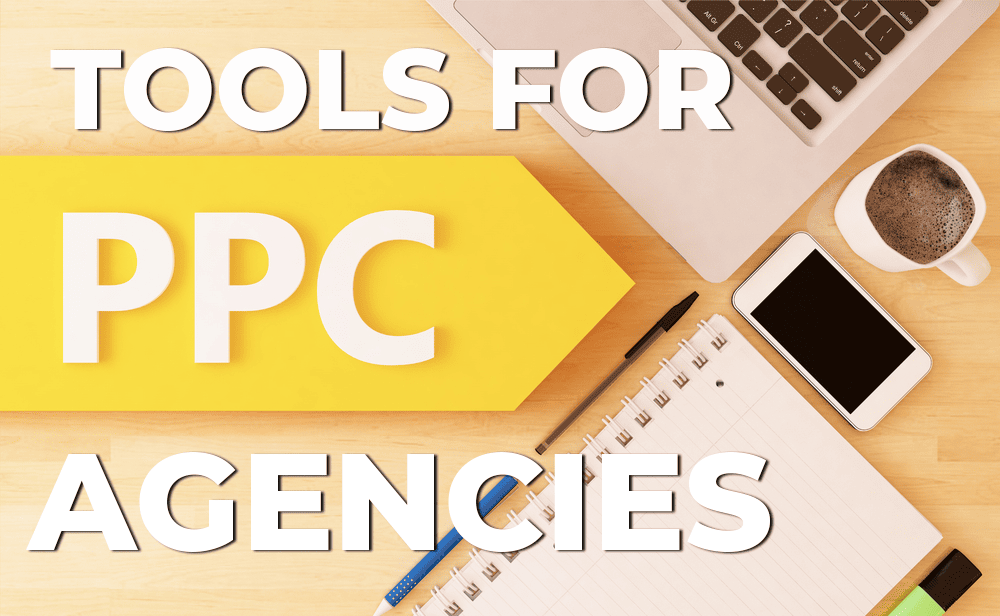Pay-per-click, popularly abbreviated as PPC, is a model of digital advertising wherein advertisers pay a fee each time a user clicks on their ads. It is the purchase of site visits instead of naturally attaining those visits.
In the PPC campaign, the advertisers declare the bid for particular keywords or phrases that are related to the targeted audience, and when users search for such keywords on the search engines, their ads are shown to them. It is called “pay-per-click” because the advertiser is charged only when someone clicks on the ad.
PPC adverts have popularly been associated with search engines, such as Google, whereby advertisers bid on keywords for their ads to appear in the sponsored results section from a search involving any of those keywords.
In addition, PPC can be used on various online platforms, including social media sites and display networks. Success in running PPC campaigns is measured by metrics such as CTR, conversion rate, and return on investment.

Meanwhile, PPC provides several opportunities for companies of all sizes to reach their prospective customers. However, enterprises and SMBs face different challenges when creating and optimizing campaigns.
For example, SMBs who have a limited budget, and limited access to data, but focus on fast ROI, will not be able to afford or leverage the strategies of larger brands. Instead, they need a unique approach that makes every dollar work in the best possible way.
In this article, we address the major differences between an enterprise and an SMB in PPC, with targeted optimization tactics to maximize advertising dollars.
You can also read: Best Link Building Strategies for Local SEO
Differences in PPC Strategies for Enterprises and Small to Medium-sized Businesses
Financial Resources
One of the major differences between SMBs and enterprises is the budget they have to spend. While smaller companies might be operating on a $5,000-per-month ad spend budget, their larger counterparts in the same sector could be spending $5,000 per day.
This discrepancy greatly affects marketing strategies. With tighter budgets, smaller businesses must narrow their targeting focus to the most important audience segments.
Optimizing Coverage
With tight budgets, a more focused approach to targeting is necessary.
Strategies to improve coverage include:
Using Phrase and Exact Match Keywords: While broad match keywords might have been increasingly effective for some advertisers in the last couple of years, they are still too complex for smaller accounts, given their limited budgets and lack of data.
This means that choosing to work with phrase and exact match keywords allows them to be more tight-fisted, as this will hold a higher authority on what queries they match than is often seen with broad match keywords.
Localized Geo-Targeting Strategy: Begin your campaign by targeting your main service areas or even a state. If these campaigns prove to be effective, or if more budget is given to you, then smart expansion should be considered.
For example, take the case of a local peanut store that can ship its products in any state. Targeting an entire nation may burn the budget without substantially increasing sales.
It is rather better to focus on a 30-mile radius around the store, making sure to dominate the search engine results page for any peanut-related searches within that vicinity.
Once your store has gained the local area, then you can scale up into other counties and work your way up to cover the entire state, region, and so on.
Local and/or Niche Keywords: Choosing long tail, more specific keywords will reduce the amount of irrelevant query matches, because it helps with precision.
Putting this together into a phrase or exact match type along with a geo-targeting keyword, more focused will develop an ultra-fine-tuned audience that does justice with your budget effectively.
Targeting something broad like “peanut” is not really productive due to its openness, and spending will go down the drain, whereas using a specific keyword like “peanut store near me” allows the intent and proves very relevant to a shop.
It’s essential to note how important this approach could be for small to medium-scale B2B companies, which always have to fight for search terms overlapping with a larger, unrelated audience. That is where longer-tail keywords are instrumental.
For instance, an ingredient supplier may want to sell to businesses such as Red Wine and not consumers directly. Optimizing for a search term such as “bulk sweetener” could attract traffic from people who want to buy supplies for personal use.
Instead, a better strategy would be to target specific terms such as “wholesale calcium carbonate supplier” and “commercial grade sweetener distributors.”
You can also read: The Importance of Keywords in Paid Search
Volume Disparity
Another distinguishing factor is that several small and medium-sized businesses (SMBs) contend with lower volume compared to larger companies. This discrepancy may stem from several factors, including constrained budgets, limited service areas, extended sales cycles, or the provision of more specialized products/services.
One significant challenge associated with low volume is the increased difficulty for automation to yield favorable results for the account. At the very least, it needs more time for data collection and system learning. However, not every business is inclined or capable of waiting for a solution that may eventually prove beneficial to them.
For instance, consider a construction company operating on a restricted budget and grappling with a prolonged sales cycle, garnering an average of 10 leads monthly through Google Ads campaigns. The efficiency of the ad platform’s algorithm improves with the accumulation of more data, thereby enhancing the overall performance of campaigns.
However, due to the limited monthly data received by this company, achieving results might prove challenging if they opt for a Maximize Conversions bidding strategy.
Similarly, let’s examine the example of Target CPA bidding. Traditionally, Google Ads has suggested testing this strategy with a daily budget set at 10 times your Cost Per Acquisition (CPA). Small and medium-sized businesses (SMBs) with a Target CPA of $50 might find it impractical to allocate $500 per day to a single campaign.
To navigate through lower volume challenges, manual bidding strategies serve as an excellent initial approach. This allows for greater control during the data collection phase, avoiding the delegation of decision-making to entities incentivized to exhaust your budget.
This is not to undermine the potential of automation in assisting smaller accounts; it’s crucial to understand the system’s requirements for success. Supplying higher-quality data, such as through offline conversions and CRM imports, enables the algorithms to learn more effectively.
Prioritizing Return on Investment (ROI)
Finally, for small and medium-sized businesses (SMBs), the urgency to witness a quick return on investment is paramount. Waiting extensively to observe leads or sales is not a luxury they can afford. Consequently, the primary emphasis should be on tapping into existing demand.
Commencing with Search and Remarketing is likely to have the most significant impact initially. These user segments exhibit a much higher intent to convert compared to those targeted in top-funnel awareness campaigns.
Additionally, it is essential to ensure the reliability and accuracy of all conversion tracking mechanisms. This diligence is crucial for a clear and precise assessment of what proves successful and what doesn’t.
You can also read: How to Track and Analyze PPC Results
PPC Optimization Strategies for Small and Medium-sized Businesses (SMBs)
When confronted with lower budgets and limited volume while maintaining a strong emphasis on ROI, my recommendation is to prioritize refinements over expansions.
While the desire to grow and scale accounts is universal, it becomes essential to optimize the existing budget first. This ensures maximum reach to the most relevant audience, laying a solid foundation for any subsequent expansion efforts.
Outlined below are optimization tactics geared toward refining expenditure and enhancing the quality of audience and traffic:
Regularly Review Search Terms and Placement Reports:
- Conduct this analysis at least once a month to identify and prevent irrelevant traffic.
- The addition of negative keywords is particularly crucial for Search campaigns, especially within the context of SMBs.
Consider Exclusions on Display or Video Networks:
- If the account operates on Display or Video Networks, contemplate excluding elements such as mobile apps, children’s YouTube channels, and other potentially spammy sites or channels.
Avoid unnecessary networks to ensure targeted ad placements:
Search Campaigns:
- For Google Ads Search campaigns, consider opting out of the Google Display Network and evaluating the necessity of participating in Google Search Partners.
- In Microsoft Advertising, while opting out of the Audience Network for Search campaigns is no longer permitted, you can still exclude specific websites at both the campaign and account levels.
Social Campaigns:
- In social media campaigns, assess the relevance of external networks on platforms such as LinkedIn. For instance, you might consider opting out of the LinkedIn Audience Network for campaigns running on LinkedIn.
Test Bid Modifications, Ad Schedules, and Exclusions Based on Performance:
- Conduct thorough performance analyses to inform bid modifications, ad schedules, and exclusions. Example: Analyzing Google Ads day and device data reveals that from 12 a.m. to 4 a.m. on weekends and on tablet devices, the CPA is at least 5 times higher than the account average. Test a -25% bid modification during those hours and a -10% bid modification for tablets, restricting campaigns to weekdays only.
- Conduct location and audience analyses to identify non-converting segments. For instance, exclude current college students and implement a -50% bid modification in locations like Chicago where conversions are lacking.
- On LinkedIn, use the Demographics Report to align with campaign targeting. If a significant portion of impressions comes from individuals in the Sales job function (outside your target audience), exclude the Sales function from all campaigns.
You can also read: Is Google Business Openness A Local Ranking Factor?
Ensure the Website is Geared for Conversions:
In conclusion, when managing campaigns for an SMB, it’s imperative that the website is well-prepared for incoming traffic. If the page lacks essential information, lacks conversion tracking, exhibits slow speed, or has poor design, the success of your PPC campaigns will be compromised.
The effectiveness of the aforementioned strategies and refinement tactics becomes significantly diminished if landing pages are not adequately optimized.
Optimizing PPC Budgets for Small and Medium-sized Businesses
Small and medium-sized enterprises encounter distinct challenges in comparison to larger corporations with extensive resources. This discrepancy is evident in PPC as well, where many SMBs grapple with constraints such as limited budgets, a scarcity of data, and heightened expectations for tangible results.
The competitive landscape can be daunting for smaller entities, especially when confronted with prominent brand names vying for attention in the same market.
Nevertheless, PPC can swiftly evolve into a pivotal element of the marketing strategy for SMBs by adopting strategies like refined targeting, meticulous control over ad spend, implementation of robust and precise conversion tracking, and continual testing and refinement processes.
Would you like to read more about “PPC Optimization Strategy for Small and Medium-sized Businesses” related articles? If so, we invite you to take a look at our other tech topics before you leave!












